“This prophecy is how they enslave us!” –Chani
Picking up where the first film left off, Dune: Part Two is a visual and sonic feast akin to the first that will enthrall the audience’s senses.
Paul Atreides (Timothée Chalamet) and his mother, Lady Jessica (Rebecca Ferguson), remain with the Fremen. Led by Stilgar (Javier Bardem), Paul and Jessica are newcomers to the Fremen society and are not trusted. While some believe Paul to be the “chosen one,” other Fremen, like Chani (Zendaya), are skeptical. They do not believe that a Messiah is coming, and they certainly don’t believe it to be Paul.
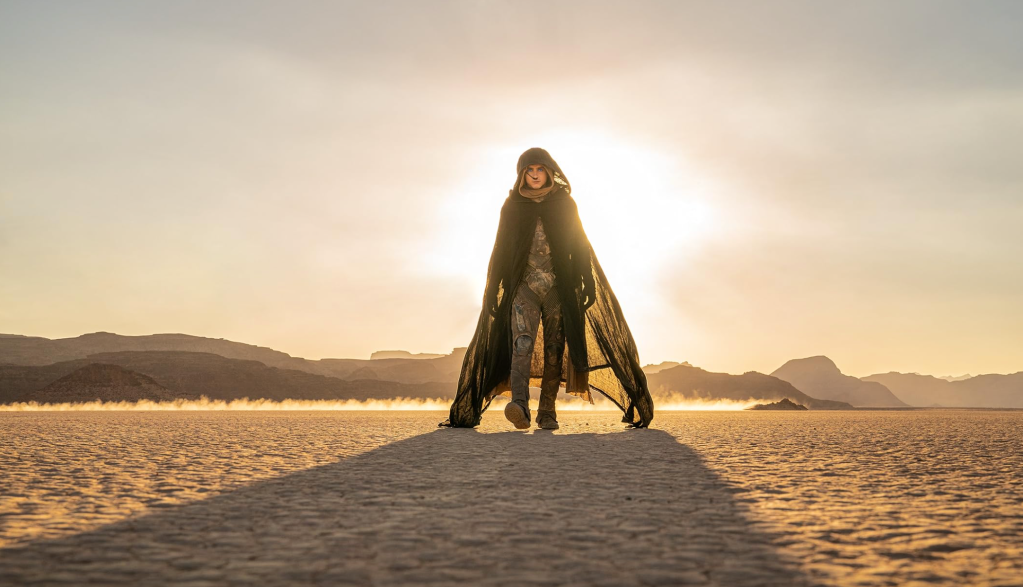
The Harkonnens continue to pillage their way across Arrakis in an attempt to take control of the planet while Shaddam IV (Christopher Walken) is promoting the fall of House Atreides. His daughter, Princess Irulan (Florence Pugh), secretly believes that Paul may still be alive, but at this point, she has nothing to solidify this thought. Even a conversation with Reverend Mother Mohiam (Charlotte Rampling) does not dissuade Irulan from her theories.
As Paul delves further into Fremen society, including learning their language, becoming a Fedaykin fighter and riding a sandworm, Stilgar continues to fill his people with hope that Paul is the one they’ve all been waiting for. However, while Paul doesn’t believe in this himself, his mother is set on spreading the word of the prophecy to the fundamentalists in Northern Arrakis.
The best thing about Dune: Part Two are the performances. Zendaya’s Chani is the heart of the film, and she is given much more to do this time than she does in the previous film. Her chemistry with Chalamet’s Paul is palpable, and the short-lived honeymoon phase between the pair makes for some of the film’s best understated moments. Chalamet commands the screen, particularly in the film’s third act, as he leans into the power he previously claimed he did not want to entangle himself with. Every line delivery is concise, and it’s easy to see the goodwill that Paul may have gained in the first film and the beginning of Part Two slowly slipping away. This could not have been done with such believability if Chalamet didn’t turn in a pitch-perfect performance.
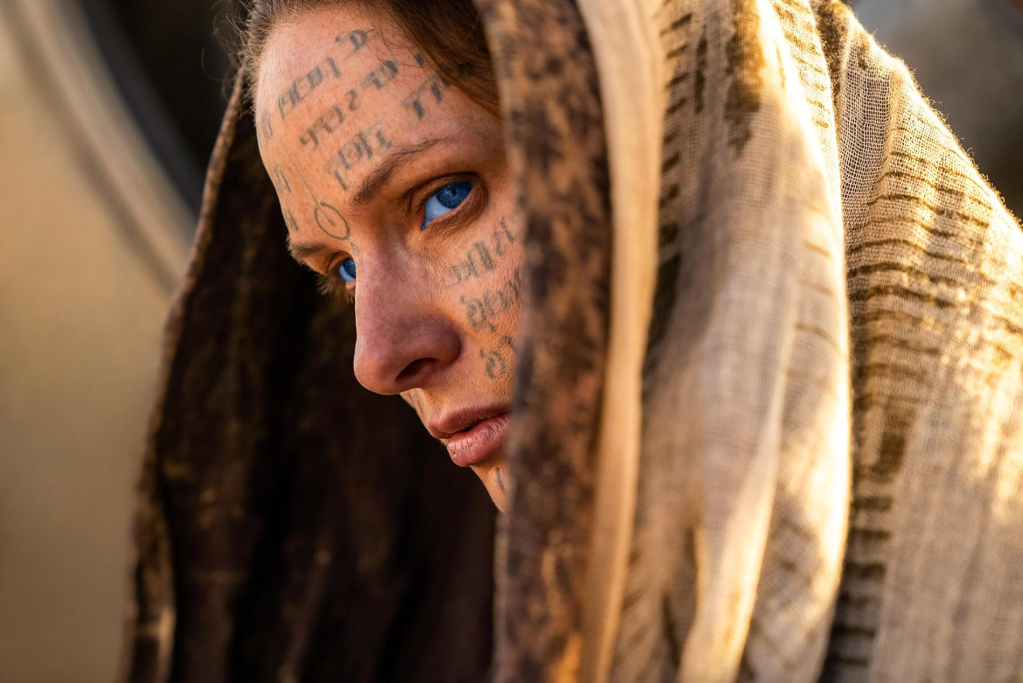
However, the best of the returning cast is Rebecca Ferguson as Lady Jessica. Ferguson has a charisma about her that is palpable in any film she’s acted in, and it’s not different in the two Dune movies. In Part Two, Ferguson does a lot of heavy lifting as her character is most important in moving the film’s narrative forward. Every look, every line delivery commands your attention and Ferguson is astonishing in every moment she’s on-screen in Dune: Part Two. Her character is one of the ones to watch most intently as her ambition grows and the her dangerousness builds from scene to scene.
Newcomers to the franchise are Austin Butler as Feyd-Rautha, Léa Seydoux as the Bene Gesserit Lady Margot Fenring, and Florence Pugh as Irulan. The trio is excellent as their respective characters, Butler and Seydoux, are menacing, each portraying their powerful characters with a gravitas that cements their formidability and lets the audience know from the moment their characters appear on-screen to pay close attention to them both. While Butler has more screen time compared to Pugh and Seydoux, the actresses make the most of their screen time, and it will be intriguing to see their storylines expand with the next installment.
Of course, we cannot discuss Dune: Part Two without discussing the film’s visuals and music. A treat to both the eyes and ears, this film is somehow even better than the first in how it brings Frank Herbert’s novels to life. From the moment the movie begins, it is clear that no expense was spared regarding the visual effects. Not one interplanetary vessel, sandworm or explosion was out of place, and in seeing new worlds, the monochromatic home of the Harkonnens with the black sun was one of the most visually interesting moments in the movie.
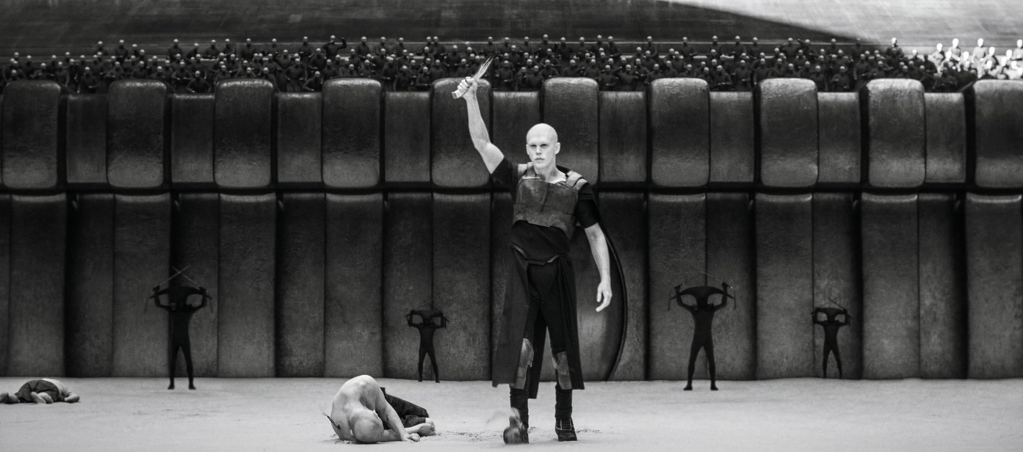
Yet again, the incomparable Hans Zimmer brings his A-game for the film’s score. The music ebbs and flows easily with whatever is occurring on-screen. In heartfelt moments, you have a song like “A Time of Quiet Between the Storms” or the aggressive percussion and synth beats of the “Harkonnen Arena” – which leaves a feeling of unease throughout that particular segment. Of course, the bombastic and otherworldly are coming to the forefront in “Worm Army.” Zimmer’s score is impactful throughout the movie’s entirety. Zimmer’s music elevates each and every pivotal scene to new heights.
That said, there are some negatives for the positives in Dune: Part Two. The film’s pacing wasn’t the best, with some sequences stretching on for too long, while others seemed over too quickly. However, the most glaring negative is the same one carried over from the previous film: the lack of SWANA (Southwest Asian/North African) actors in key roles, aside from Souheila Yacoub, who portrays Shishakli. There was also a level of discomfort that came with this, particularly when the House of Harkonnen (which is primarily white) was attacking and laying waste to Arrakis, a planet populated by the Fremen, who are mostly Black and brown citizens.
With Dune: Part Two showing more of Fremen society, it is even more glaring than in the first film. It is shown in their clothing, the way they depict them praying, and the language they speak (which has very distinct Arabic influences). In addition to the “white saviour” trope partly continued from the first film (although once you get to the film’s third act, you’ll see this narrative change), this is Dune: Part Two’s biggest problem (for me).
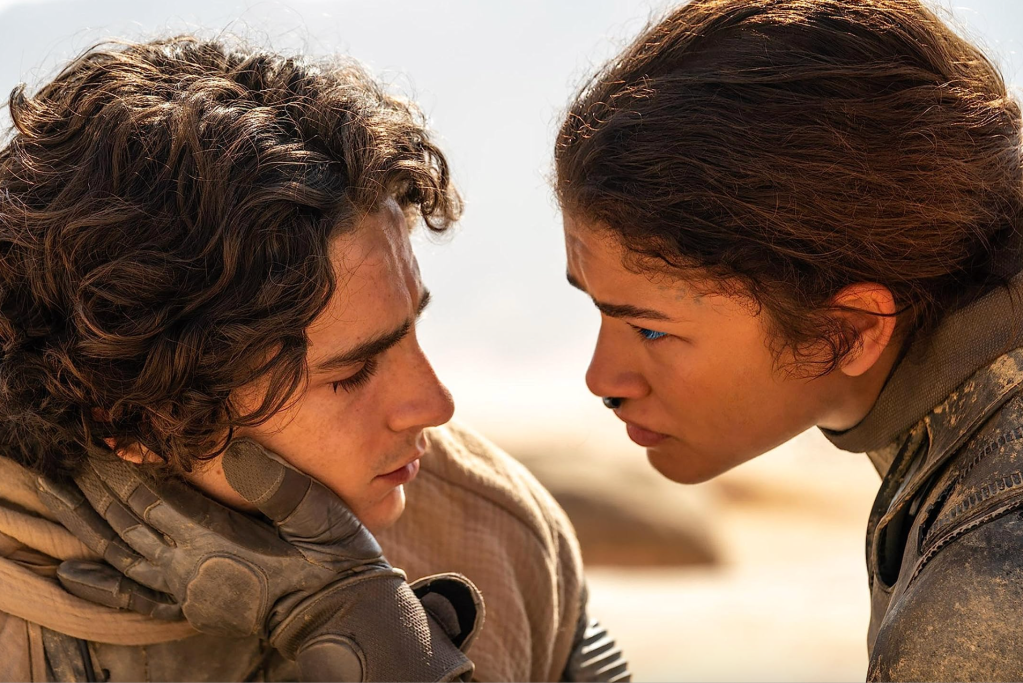
Whether it’s a film based on the 1989 Montréal massacre with Polytechnique or following a father trying to find his missing child in Prisoners or “Time to meet God” in Sicario, Denis Villeneuve continues to show moviegoers why he is such a thrilling director. Villeneuve knows how to bring a broad range of stories to life, and working alongside cinematographer Greig Fraser for both Dune films, the pair truly capture a sci-fi spectacle.
With an unforgettable score, vivid visuals, and powerful performances, Dune: Part Two is what a sci-fi epic should be. However, that doesn’t mean it is above criticism – even if the film, for the most part, was good.


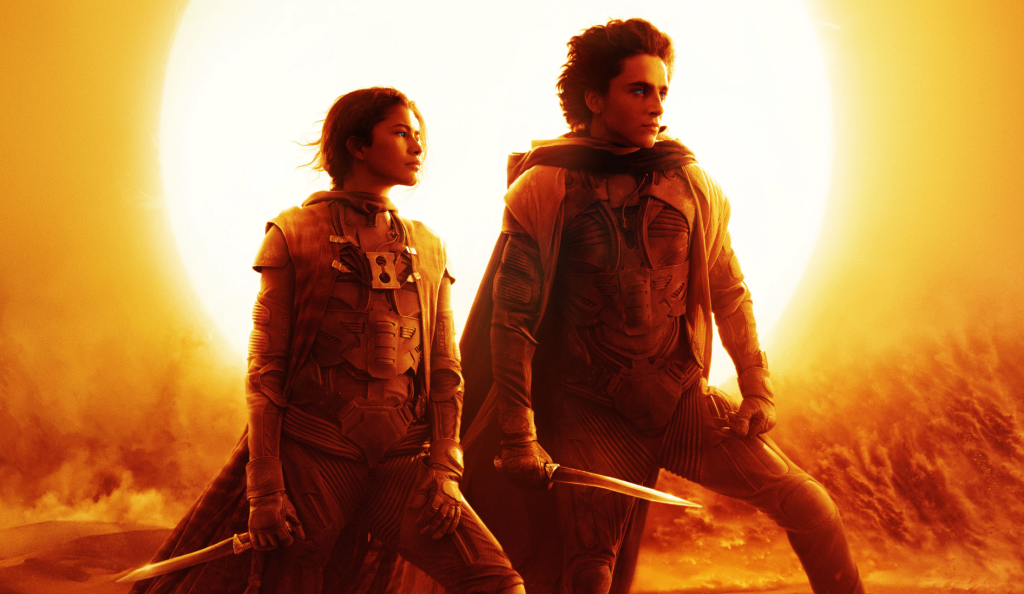
Leave a comment